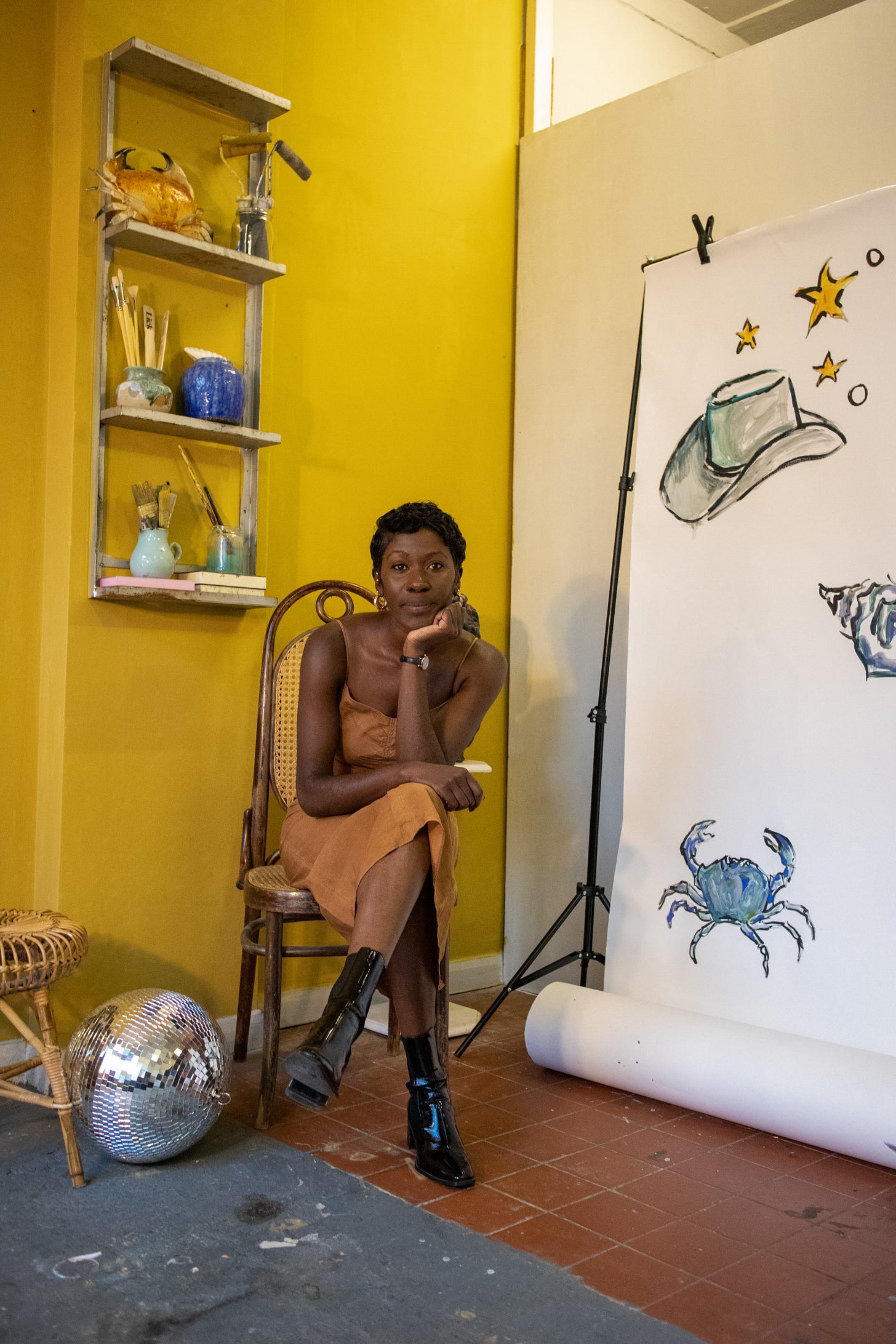BCC 100 #1 — Diana Nabagereka, Keyholder of Brixton Village
Q&A — Diana Nabagereka on Brixton’s Market and Brixtons Culture
Q1. What does “Brixton culture” mean inside the market—day to day?
Diana: Culture here is the produce, daytime shops, makers, food and music together—the smells, greetings and small rituals that make people feel this is a place like no other place, yet it feels like home. If those everyday behaviours disappear, the market stops feeling like Brixton. So I treat culture as operational: dozens of small choices, every day, that protect that feeling.
“Culture here is operational, not decorative—it lives in daily choices.”
Q2. How do you curate and hold that culture?
Diana: By protecting the mix and programming with intention. We keep traditional traders visible (greengrocers, butchers, fishmongers) while spotlighting crafts, retail and hospitality so the market works at 10 am and 10 pm. I listen hard, because people use this place like a living room—they’ll tell you what lands. My job is to ensure we have a warm welcome and always: Brixton first.
Q3. What’s special about Brixton’s market compared with places like Camden or Borough Market?
Diana: Brixton is authentic culture, not a set piece. When you walk out of the station, you feel decades of Black British heritage alongside new energy—languages, foods, hairstyles, music, tiny rituals of welcome that live side by side. It’s often called the Black cultural centre of the UK, and you sense that history in the everyday: elders and newcomers sharing benches; a £2.50 patty next to a glass of wine. That plurality feels ordinary here, and that’s the magic. Over time, Brixton has built a culture the right way—through people and practice. Visitors come to understand what a real neighbourhood feels like; locals come to be seen. My job is to keep that feeling honest and accessible so pride travels home with everyone who walks out.
“We’re an everyday neighbourhood market—not a tourist set.”
Q4. So then, why do celebrities and international visitors love visiting this place?
Diana: Because the market is authentic culture in use—Black British heritage lived alongside new energy—so you’re not walking through a set, you’re in a unique neighbourhood. The most diverse place in Europe or the world.
“We don’t perform culture here—we live it.”
Q5. Gentrification in practice: how do you balance the needs of the community with the needs of the nighttime economy businesses who need footfall from outside?
Diana: I dont think you can leave it to chance. We actively preserve daytime retail and produce while keeping hospitality vibrant. That means being careful with tenancy mix and programming so daytime spending survives—not as nostalgia, but as a working part of the market. This is often the part of the market that supports the actual local community.
Q6. What does the market mean to the wider Brixton community?
Diana: It behaves like the community third place— a place to meet, dwell and people‑watch without any pressure to spend. That creates a sense of belonging and ownership. With long opening hours, it’s a the community living room in spirit.
“Even as private property, the market is owned in spirit by Brixton.”
Q7. What has it been like leading around 130 businesses as a Black woman?
Diana: Once Brixton trusts you, she holds you. As a Black woman in this role, I’m deliberate about who we platform and when. We tell Black heritage and diverse stories all year, not just during Black History Month—I want people to see themselves in the market every day.
Brixton is a She :-) ?
Diana: Yes! I refuse to code Brixton as male—she’s 100% woman: fluid, dynamic, welcoming, sometimes glamorous at night.
Q8. What are the biggest challenges new tenants face, and why is there so much turnover?
Diana: The big traps are misreading the customer and inconsistent hours. A beautiful fit‑out won’t save you if the founder’s presence disappears too soon. This market reads authenticity fast; without it, people walk past.
Q9. What advice would you give anyone opening a new shop/bar etc….
Diana: Be present every day. Open when you say you’ll do—seven days, breakfast‑lunch‑dinner—with a recognisable face at the counter. Do the homework on your customer and stick to clear messaging. It’s simple and hard, but it’s how a pop‑up becomes part of the neighbourhood and stays.
“Presence beats aesthetics. Start with opening in the hours you promise.”
Q10. What are the core areas of culture? I’ve heard you describe it as cultural pillars?
Diana: Heritage, Food diversity, Community, Retail, Music and Craft—each with its own communities. We commission from within those communities so they all feel seen. The test is whether the diversity of neighbours from different diasporas can walk in and feel spoken to.



